Results 8,931 to 8,940 of 12096
Thread: Anandtech News
-
12-11-18, 02:38 PM #8931
Anandtech: Nokia 8.1 Unveiled: Elegant Phone with 6.18-Inch Display, 20MP Selfie Cam,
HMD Global has introduced its new flagship smartphone, the Nokia 8.1. The phone features a large 6.18-inch display, an elegant design with a metallic frame, an advanced camera with Zeiss optics, and a pretty unique selfie camera with a 20 MP sensor. What sets the Nokia 8.1 apart from other Nokia 8-branded devices released by HMD so far is an odd choice of SoC and features for a high-end smartphone. In fact, the Nokia 8.1 looks to be a rebadged version of the Nokia X7 introduced in China earlier this year.
Positioning, Chassis and Display
Let us start from the positioning of the phone. Nokia’s 8-series has traditionally been all about style (as discussed in historical flashback of our Nokia 8 Sirocco coverage), yet they did feature many differentiating innovations, essentially being Nokia’s business-oriented 6-series in a more premium chassis with a very distinctive design.
Officially, HMD positions the Nokia 8.1 between the Nokia 8 released in Fall 2017 and the Nokia 8 Sirocco launched last Spring, leaving the Nokia 8 Sirocco on the very top of HMD’s product range. Meanwhile, many features of the new Nokia 8.1 make it more of a successor to the Nokia 7 Plus rather than the Nokia 8.
The Nokia 8.1 comes with regular Gorilla Glass front with an aluminum frame chassis. By contrast, the Nokia 8 and the Nokia 8 Sirocco used a aluminum unibody with a and a Gorilla Glass 5 front, along with a stainless steel frame. The new phone is slightly larger than other Nokia 8-branded devices, but it also features the largest display with as well includes a notch. As for colour options, the new Nokia 8.1 will be available in Blue/Silver, Steel/Copper, and Iron/Steel colors.
Moving on to the display. The Nokia 8.1 comes with a 6.18-inch IPS display featuring a 2280x1080 resolution with an 18.7:9 aspect ratio, resulting in a pixel density of 408 PPI. HMD says that the screen features its PureDisplay hardware and software tech powered by a PixelWorks chip that supports HDR10, can upscale SDR content to HDR, adjusting brightness and contrast dynamically to ensure optimal visual experience both indoors and outdoors. Nokia introduced its PureDisplay technology in October along with its Nokia 7.1 smartphone, and while formally the display is not as advanced as the POLED screen used on the Nokia 8 Sirocco, does have the benefit of HDR10 playback, which will help video media playback.
A Look Inside
When it comes to internals, the Nokia 8.1 is based on Qualcomm’s new Snapdragon 710 processor accompanied by 4 GB of LPDDR4X DRAM and 64 GB of eMMC 5.1 NAND flash storage. The choice of SoC is pretty logical for a performance-mainstream Nokia X7, but the chip looks a bit odd in a Nokia 8-branded device (which have used Qualcomm’s Snapdragon 835). In the meantime, Snapdragon 710 integrates eight Kryo 360 cores (two semi-custom Cortex-A75 and six Cortex-A55 cores in DynamIQ configuration), the Adreno 616 GPU, and the X15 LTE modem (800/150 Mbps UL/DL).
As for the battery, the Nokia 8.1 handset is outfitted with a 3500-mAh battery, one of the highest capacity batteries in a modern Nokia smartphone, and comes witth 18 W fast charging support. The phone will ship with Android 9 Pie as the OS, which has a number of battery life-oriented optimizations. The combination of the bigger battery as well as newer generation SoC allows HMD/Nokia to proclaim that the new handset will work for a longer time on one charge when compared to predecessors.
Cameras & InterfacesGeneral Specifications of the Nokia 8.1 Nokia 8.1 Display Size 6.18" Resolution 2280×1080 (18.7:9) PPI 408 PPI Cover Gorilla Glass Processor PixelWorks SoC Snapdragon 710
8 × Kryo 360 @ 1.7 - 2.2 GHz
2x semi-custom Cortex-A75 cores
6x semi-custom Cortex-A55 coresGPU Adreno 616 RAM 4 GB LPDDR4XStorage 64 GB + microSD Networks GSM GPRS (2G), UMTS HSPA (3G), LTE (4G) SIM Size Nano SIM SIM Options Dual SIM, second SIM slot is used by microSD card Local Connectivity 802.11ac Wi-Fi, BT 5.0,
3.5mm jack,
USB 2.0 Type-CFront Camera 20 MP Rear Camera Main: 12 MP, f/1.8, 1.4µm, Dual Pixel PDAF
Depth: 13 MP, f/2.0, 0.9µm
Flash: dual-LEDBattery 3,500 mAh Dimensions Height 154.8 mm | 6.09 inches Width 75.8 mm | 2.98 inches Thickness 8 mm | 0.31 inches Weight 180 grams | 6.35 ounces Launch OS Android 9.0 Pie
Imaging capabilities are among the key selling features of Nokia’s smartphones, so the X7/8.1 come equipped with rather advanced cameras. The main camera traditionally uses optics co-designed with Zeiss and comprises of a 12MP sensor with an f/1.8 aperture, a 13MP B&W sensor to capture depth, and a dual-tone flash. The selfie camera features a 20MP f/2.0 sensor and support “AI-enhanced” face unlock, a major improvement when compared to the Nokia 8 Sirocco.
As always, Nokia’s camera software features numerous enhancements and exclusive features, including a Pro Camera Mode that enables a thorough control of white balance, ISO, aperture, and shutter speed, as well as the “bothie” mode that enables to record videos or take photos using both front and back cameras simultaneously.
Moving on to essential interfaces that the Nokia 8.1 has. On the wireless side of things there are obviously 802.11ac Wi-Fi, Bluetooth 5.0, and GPS/AGPS+GLONASS+Beidou positioning. On the physical side of things, the handset has a USB 2.0 Type-C connector for charging and data, a 3.5-mm TRRS audio jack, a speaker, and a microphone.
Price & Availability
HMD plans to start sales of the Nokia 8.1 globally starting from December 15 – December 21 timeframe depending on the country. The recommended pricing of the smartphone is €399 for Europe, which is considerably below roughly €550 for the Nokia 8 Sirocco. It is unknown how much the phone will cost in the US and when HMD plans to make it available in North America, though it is reasonable to expect the handset to show up on this side of Atlantic in the coming weeks.
Meanwhile, the Nokia X7 is already available in China for the price of roughly $307 - $380 for the regular 4GB/64GB model and for $370 - $440 for the premium version outfitted with 6 GB of RAM and 128 GB of storage.
Related Reading:
- Nokia 7.1 Smartphone Launched: 5.84-Inch ‘PureDisplay’, Zeiss Optics
- Hands-On With the Nokia 8 Sirocco: Reviving Nokia's 'Dream Phone' Concept
- Nokia Smartphones to Exclusively Use Zeiss Optics
- Nokia 6 to Hit U.S. Market on July 10: 5.5-inch LCD, Snapdragon 430, $229
Sources: Nokia, GSMArena
More...
-
12-11-18, 04:34 PM #8932
Anandtech: Snapdragon 855: 802.11ax-Ready / Wi-Fi 6 Demonstrations
While the headline features of the new Snapdragon 855 Mobile Platform might be the 5G connectivity, or the Cat 24 LTE modem, or the new CPU/GPU combination, further down the list is the fact that the S855 chip is also 802.11ax-ready. Under the new branding, this is ‘Wi-Fi 6’. Qualcomm had a demo to show it in action at the Qualcomm Snapdragon Summit.
More...
-
12-12-18, 09:29 AM #8933
Anandtech: Dell Shareholders Vote to Make Company Public Again
Dell's shareholders on Tuesday voted to make the company public after five years of being a private company. The decision is expected to simplify the raising capital and to allow Dell to pursue stock-based acquisitions, which in turn will help the company to grow further by gaining IP and expertise it needs. In addition, by going public Dell is going to gain mid and long-term institutional investors, reducing pressure on the management. Dell’s shares will return to New York Stock Exchange in late December.
A $23.9 Billion Deal
In a bid to become a public company, Dell needs to unify all of its assets first. To do so, the company needs to acquire all of the tracking stock of subsidiary VMWare (DVMT), a company that it controls following the acquisition of EMC in 2015. On Tuesday the majority of investors voted for the deal, under which Dell will acquire the stock at $120 per share. The transaction will cost Dell $23.9 billion, which will be paid in cash and Dell stock. The cash part will be financed by Dell and a special dividend by VMWare. To a large degree, Dell will essentially need to buy back stock of the subsidiary it controls. In turn, this will allow Dell to become a publicly traded company without an IPO because VMWare is essentially a public trading company.
There is a rationale behind Dell’s moves. In 2013 in a bid to transform itself from a PC maker to a large high-tech company akin to IBM or HP, the company went private in order to break free from conservative institutional investors who are first and foremost focused on the balance sheet. This gave Dell the freedom it needed to reorganize internally and purchase the necessary outside talent and firms.
After the acquisition of EMC and VMWare, Dell became a leading supplier of PCs, servers, storage, software, cloud services, and so on. This has changed Dell's position in the market substantially, and the company's hope is that with its new busienss focus, traditional long-term investors will now consider Dell differently than back in 2013. This despite its $52.7 billion debt leftover from its acquisition of EMC for $67 billion three years ago. Meanwhile, the company still needs money to acquire smaller players to stay relevant in the long term.
Always Changing
Dell is not new to transformations. Originally started as a private PC workshop in a dorm room in 1984, Dell began to expand globally by the late eighties. The company was among the first to adopt online sales of built-to-order PCs in the mid-1990s and was rapidly gaining market share till mid-2000s despite economic turmoil of the late nineties and dot-com crash in the early-2000s. In the process the company has outlived numerous rivals, including Compaq, Gateway, IBM’s PC business unit, Packard Bell and many others, who were acquired or forced to leave the market. For a number of years Dell was the No. 1 PC maker in the world. Around the time, Dell also began to sell its own servers, televisions, PDAs, printers, and other products expanding beyond desktops and laptops.
Because of commoditization of the PC market, Dell’s direct sales model ceased to thrive starting from mid-2000s as many consumers preferred to buy laptops from retailers, which mostly carried PCs from Dell’s rivals. In a bid to become competitive again, Dell had to close down its manufacturing facilities around the world, including the U.S. and start relying on contract makers of electronics, just like other PC makers, in 2008 – 2009. Meanwhile, the company never returned to the top spot on the PC market, partly because it was not lucrative enough and partly since Dell wanted to lessen its reliance on PC business.
In a bid to renovate the company once again, Michael Dell decided to make it private in 2013 and successfully did so later that year with the help of Silver Lake Partners, Microsoft, Blackstone Group, Carl Icahn, and others. While being private, Dell acquired EMC and VMware and transformed itself internally in a bid to become a vertically integrated company that provides a variety of devices and services. As ironically as it might seem, in a bid to continue its transformation, Dell needs to become public once again, which is exactly what it is doing.
Dell’s shares will reappear at NYSE under the ticker “DELL” on December 28, 2018.
Related Reading:
- Dell Launches Three Rugged Latitude Laptops with up to 1000-nit Displays
- Dell Refreshes XPS 13 2-in-1: Amber Lake 5W CPUs with Thunderbolt 3
- Dell U4919DW Curved Display Unveiled: 49 Inches, 5120x1440
Sources: Dell, Bloomberg, Statesman, Reuters
More...
-
12-12-18, 09:29 AM #8934
Anandtech: Intel's Architecture Day 2018: The Future of Core, Intel GPUs, 10nm, and H
It has been hard to miss the fact that Intel has been vacuuming up a lot of industry talent, which brings with them a lot of experience. Renduchintala, Koduri, Keller, Hook, and Carvill, are just to name a few. This new crew has decided to break Intel out of its shell for the first time in a while, holding the first in a new tradition of Intel Architecture Days.
Through the five hours of presentations, Intel lifted the lid on the CPU core roadmaps through 2021, the next generation of integrated graphics, the future of Intel’s graphics business, new chips built on 3D packaging technologies, and even parts of the microarchitecture for the 2019 consumer processors. In other words, it's many of the things we've been missing out on for years. And now that Intel is once again holding these kinds of disclosures, there’s a lot to dig in to.
More...
-
12-12-18, 11:26 AM #8935
Anandtech: Samsung’s 5G Smartphone Prototype: Don’t Mention The Notch
In the Verizon 5G demo area at Qualcomm's recent Snapdragon tech summit, there was a station that was streaming 4K video through a 5G smartphone. That device was a Samsung prototype, and it was kept very hush-hush. They were serious: a completely dark screen and a thick case so none of the discernable details could ‘leak’.
More...
-
12-12-18, 11:26 AM #8936
Anandtech: ADATA Unveils Ultra-Compact UE700 Pro External Flash Drives: Up to 360 MB/
ADATA has released a new lineup of USB flash drives that combines compact dimensions, high capacity, and high performance (in case of high-end models). The UE700 Pro drives come in a metallic chassis and are aimed at those who always carry a flash drive and need a sturdy enclosure. Meanwhile, the product is USB 3.0 Type-A only and will need an adapter to work with modern laptops.
The ADATA UE700 Pro flash drives come in 32 GB, 64 GB, 128 GB, and 256 GB configurations. The range-topping 256 GB model features read and write speeds of respectively up to 360 MB/s and 180 MB/s, allowing it to be amongst the fastest USB 3.0 flash drives ever released.
ADATA does not disclose which controller or flash memory it uses for its UE700 Pro, but considering how fast the drive is, it is logical to assume that the company installs 3D NAND with a relatively high I/O speed.
The UE700 Pro drives come in a brushed aluminum enclosure that is 7 mm thick, 63 mm long, and weighs 11 grams. This is hardly the most compact chassis around, but the positive of relatively larger flash drive is that it is harder to lose. The USB Type-A connector of the drive can be slided in and out in a bid to protect it while carrying the device around.
ADATA already lists the new UE700 Pro flash drives on its website, so expect them to hit various markets in the coming weeks. The company has not announced pricing, but expect the lower-capacity models to fall in the same cost range as competitor offerings featuring similar capacity and performance, whereas the 256 GB SKU will carry a premium price tag due to its speeds and increased capacity.
Related Reading:
- Exploring Performance Consistency in USB 3.0 Flash Drives
- Mushkin at CES 2018: CarbonEXT 1 TB USB 3.0 SSD, Swap USB Type-A & Type-C Drive
- Plextor Launches EX1 USB-C External SSD: Up to 550 MBps, 512 GB and LDPC
Source: ADATA
More...
-
12-12-18, 04:20 PM #8937
Anandtech: Implementing 5G in the UK: EE Trial Sites and First Cities
As a Brit, having one of our local companies get on stage at Qualcomm’s Snapdragon Summit and talk about the deployment in the UK was certainly an interesting twist in the proceedings. Fotis Karonis, The BT/EE Group Executive Advisor on 5G, presented a list of the first cities in the UK to get 5G as well as the second wave, but before this we also got a peak at the first 5G trial sites in London.
More...
-
12-13-18, 05:04 AM #8938
Anandtech: MediaTek Announces New Premium Helio P90 SoC
It’s been a while since we’ve talked about MediaTek – the Helio P60 was the last release in the more visible “premium” range that the company now focuses on. The P70 released later this year seemingly was the same P60 chipset binned at a higher clock-speed. With new generation manufacturing processes around the corner, as well as Arm’s new Cortex IP cores, I’ve been expecting a new release from MediaTek for a while now.
Today’s announcement is about the new Helio P90: The new chipset is quite a surprise as it isn’t exactly what I had expected. The P90 naming seemingly positions the chipset at the very high-end of the “P-series”, yet its specifications aren’t exactly matching this positioning.
Let’s start on the specifications of the P90:
At the heart, the new P90 is now MediaTek’s first Arm DynamIQ CPU configured SoC. The Arm Cortex A73 and A53 cores of the P60 and P70 have been replaced by the newer generation Cortex A75 and Cortex A55 cores. The A75 cores are clocked in at 2.2GHz, while the A55 cores come at a similar 2.0GHz clock as its predecessors.MediaTek Current P-Series SoC Helio P90 Helio P60/P70 CPU 2x Cortex A75 @ 2.2GHz
6x Cortex A55 @ 2.0GHz4x Cortex A73 @ 2.0/2.1GHz
4x Cortex A53 @ 2.0GHzGPU PowerVR GM 9446 @ 970MHz Mali G72MP3 @ 800/900MHz APU / NPU / AI Proc. / Neural IP 2x +140GMACs
(Tensilica DSP)
+ In-house Inference Engine
1127GMACs total2x 140GMACs
(Tensilica DSP)Memory 2x 16bit LPDDR4X @ 1866MHz 1x 32bit LPDDR3 @ 933MHz
2x 16bit LPDDR4X @ 1800MHzISP/Camera 1x 48MP or 2x 24+16MP 1x 32MP or 2x 20+16MP Encode/
Decode2160p? H.264 & HEVC 2160p30 H.264 & HEVC Integrated Modem Category 12/13
DL = 600Mbps
3x20MHz CA, 256-QAM, 4x4 MIMO
UL = 150Mbps
2x20MHz CA,64-QAMCategory 7/13
DL = 300Mbps
3x20MHz CA, 64-QAM
UL = 150Mbps
2x20MHz CA,64-QAMMfc. Process 12FFC 12FFC
What is very surprising here for MediaTek is the core-count for each core type: MediaTek has moved on from a 4+4 configuration to a 2+6 configuration, mimicking Qualcomm’s Snapdragon 670 and 710 chips. In terms of multi-threaded performance this should represent a downgrade over the P60/70, even though the new A75 cores should represent a good boost over the A73 cores. MediaTek talks about including a “large L3” in the new chipset, however doesn’t disclose its exact size, neither talks about the L2 configurations of the CPU cores.
On the GPU side, we see a big shift for MediaTek as for the first time in a long time we see the company putting aside Arm Mali GPU in favour of Imaginations new PowerVR GM 9446 GPU running at up to 970 MHz. This is Imagination’s biggest 9XM configuration and comes with 2 USCs for a fillrate throughput of 8 pixels per clock as well as a total compute throughput of 128 FLOPS/clock. To put this into perspective, this is roughly over double the fillrate of the P60’s Mali G72MP3 GPU and represents either a 77% increase in FMADD throughput, or an 18% increase in FLOPS/clock depending on if you also count FADD units.
On the machine inferencing side, MediaTek makes a big jump in terms of computational performance: Here we still see continued use of Tensilica’s DSP in the P90, the unit that was able to also handle machine learning inferencing workloads on the P60 and P70. This unit continues to be used in the P90, but on top of this MediaTek now for the first time integrates a dedicated inference engine that was designed in-house. MediaTek doesn’t break the figure down, but says the total performance of the units total 1127 GMACs. In the more conventional counting methods, a MAC is equivalent to two OPS, so in other words the P90 should be able to deliver about 2.2TOPs. It’s to be noted that the new inferencing engine seems to be dedicated for FP16 operations as the INT8 performance of the SoC is quoted to having been increased by only 10-20% - meaning such operations are still relegated to the Tensilica IP.
In terms of bandwidth, MediaTek still remains quite conservative in this regard as the P90 continues to still only feature a 32-bit wide memory controller in the form 2x 16b LPDDR4X channels running at up to 1866MHz, resulting in a theoretical bandwidth of 14.92GB/s.
Connectivity wise, we integrated has seen an upgrade from Category 7 to Category 12, doubling downstream peak download speeds to up to 600Mbps with the help of new 256QAM and 4x4 MIMO.
Lastly, imaging pipelines as well as the ISP are said to have seen big upgrades as the new chipset now offers multi-frame noise reduction, now supports larger sensors up to 48MP in single-camera mode or 24+16MP in dual operation along with acceleration for dual-sensor depth sensing and new software stacks making use of the new inferencing hardware, improving features such as edge detection.
So overall the MediaTek P90 looks to be a healthy upgrade in all regards- however it’s still very much a conservative SoC. Here MediaTek still lags behind in terms of integrating the newest IPs such as Arm’s new Cortex A76 GPU for example. The SoC is also manufactured on TSMC’s 12FFC process node – which does represent a disadvantage to MediaTek’s direct competition that the P90 positions itself against: the Snapdragon 670, 710 and even the newer 675. Because MediaTek markets the P90 this high up the P-series, I have to wonder if that we’ll soon maybe see a return of an X-series SoC featuring the higher specifications for a 7nm chipset next year.
The Helio P90 is said to be available to partners and we’ll be seeing first commercial devices announces towards the end of Q1 2019.
More...
-
12-13-18, 08:54 AM #8939
Anandtech: AMD Releases Radeon Software Adrenalin 2019 Edition: Streaming for Videos,
As 2018 winds down, once again it’s time for AMD’s annual major feature update for their graphics drivers, Radeon Software. Going by the unassuming title of ‘Radeon Software Adrenalin 2019 Edition’, today’s release is more of an evolution on last year’s Adrenalin Edition, bringing improvements and further integrations with AMD Link and Radeon Overlay. The headlining feature is the new capability to game stream to a mobile device or VR headset, powered by ReLive and AMD Link. Additionally, Adrenalin 2019 Edition 18.12.2 also brings WattMan overclocking/undervolting profile presets, WattMan controls in AMD Link and Radeon Overlay, ReLive improvements for streamers, and ‘Radeon Advisors’, which are new game/settings optimization tools for entry-level users.
More...
-
12-13-18, 09:29 AM #8940
Anandtech: Intel Adds B365 Chipset to Lineup: The Return of 22nm
Intel has quietly added a new chipset that is made using the company’s 22 nm fabrication process to its 300-series lineup. As the name suggests, the Intel B365 PCH for desktop PCs has a similar positioning with the company’s B360 chipset, but the two products have many differences apart from their manufacturing technologies. Meanwhile, the launch of a 22 nm product is expected to free up some capacity for 14 nm products, such as CPUs
Intel’s B365 PCH belongs to the 300-series chipsets, so it has to support Intel’s latest processors and select platform features. At the same time, the chip is made using Intel’s 22 nm fabrication process and therefore formally belongs to the Kaby Lake family. In fact, key specs of the B365 resemble those of the H270 with some minor differences. Therefore, we might be dealing with a renamed and re-certified silicon here, and although Intel has not confirmed this, there are some unofficial indicators about the rename.
The new B365 chipset supports 20 PCIe 3.0 lanes, up from 12 supported by the B360. Furthermore, the B365 PCH also supports hardware RAID for PCIe and SATA storage devices, something that the B360 lacks.
Meanwhile, the B365 does not feature an integrated USB 3.1 Gen 2 controller and does not support CNVi Wi-Fi + BT companion RF modules (such as the Wireless-AC 9560 that supports up to 1.73 Gbps throughput over 160 MHz channels), essentially losing two major advantages that Intel’s 300-series platforms have over predecessors. To enable USB 3.1 Gen 2 and Gigabit-class Wi-Fi speeds, motherboard makers will have to install standalone controllers, which will consume PCIe lanes and increase BOM costs of motherboards as well as PCs.
The B365 is not the first Intel 300-series chipset to be made using the company’s 22 nm process technology. Earlier this year the company quietly launched its H310C, which is allegedly fabbed using the same tech.Intel's 300-series PCH Z370 H370 Q370 B365 B360 H310 Launch Oct '17 Apr '18 Apr '18 Dec '18 Apr '18 Apr '18 Market Consumer
-Consumer
Corporate-
CorporateConsumer
CorporateConsumer
-ME Firmware 11 12 11 12 HSIO Lanes 30 24 14 Total USB 14 12 10 Max USB 3.1 G2 - 4 6 0 4 0 Max USB 3.1 G1 10 8 6 4 SATA 6 Gbps 6 4 PCH PCIe 3.0 Lanes 24 20 24 20 12 - PCH PCIe 2.0 Lanes - 6 Max RST PCIe Storage 3 2 3 2 (?) 1 0 RAID PCIe 0, 1, 5 - - SATA 0, 1, 5, 10 - - Supports Optane Y N Integrated 802.11ac N Y N Y Y Intel Smart Sound Y N Intel vPro N Y N TDP 6 W
By moving production of chipsets to an older node Intel frees up its 14 nm capacities for higher-margin products, such as Intel Core and Intel Xeon CPUs. Given the fact that the company is struggling to meet demand, it is clearly logical for Intel to use older process nodes for chipsets that are rather simple and barely make use of any of the significant advantages of the latest nodes.
Related Reading:
- Intel Preps New H310 Chipset Revision With Windows 7 Support For Coffee Lake
- Intel Further Boosts CapEx to Meet Demand for 14nm Chips
- Intel Investing $1B to Meet 14nm Demand: Prioritizing High-End Core and Xeon
- Intel 10nm Production Update: Systems on Shelves For Holiday 2019
- Intel Expands 8th Gen Core: Core i9 on Mobile, Iris Plus, Desktop, Chipsets, and vPro
Source: Intel (via Tom’s Hardware)
More...
Thread Information
Users Browsing this Thread
There are currently 19 users browsing this thread. (0 members and 19 guests)








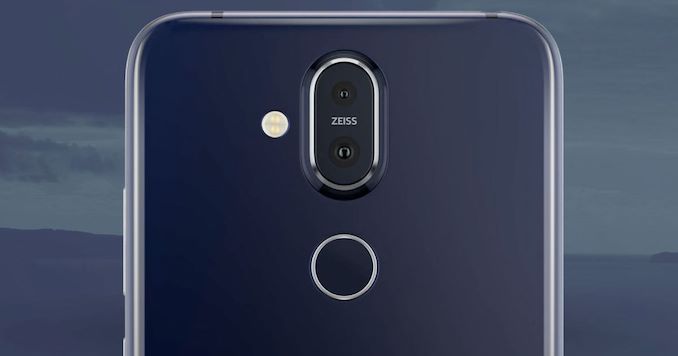



 Quote
Quote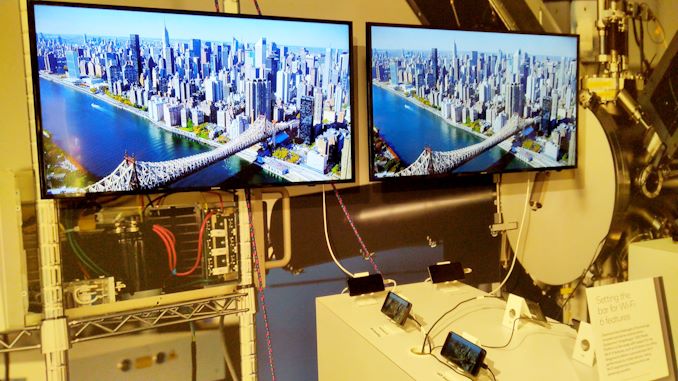
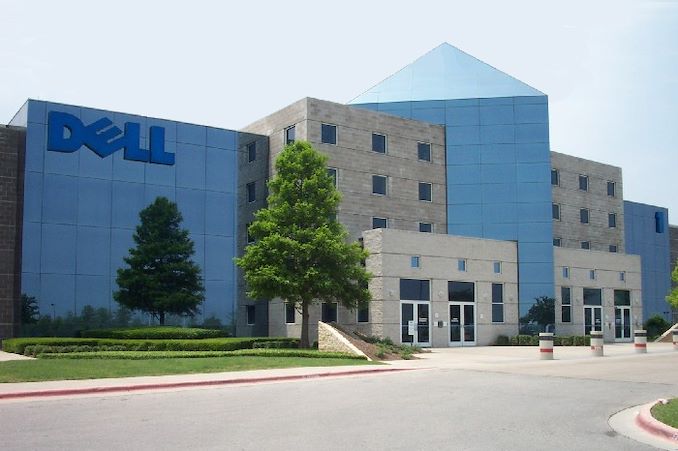
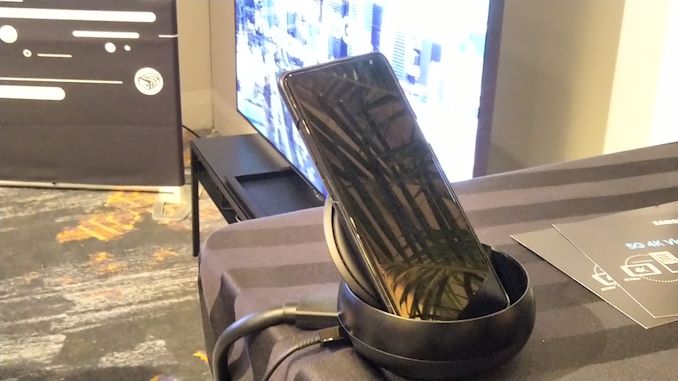
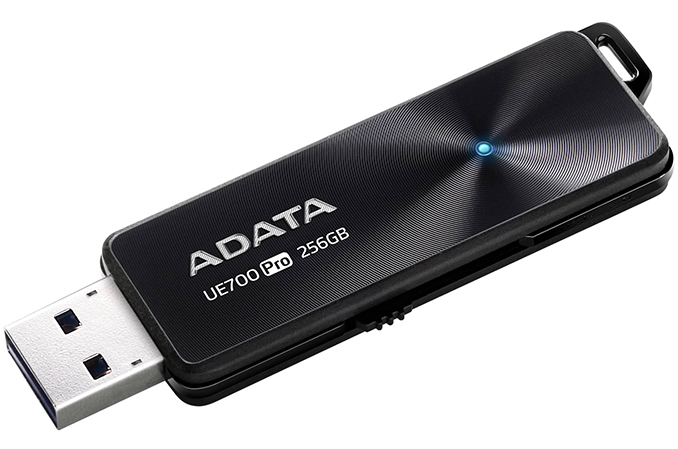


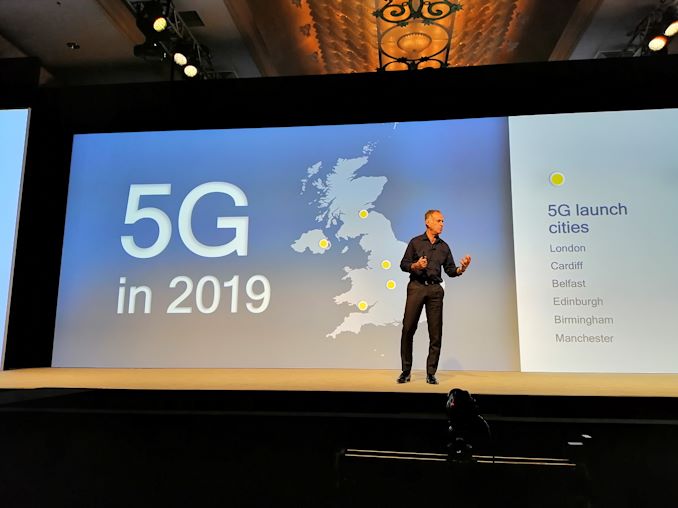
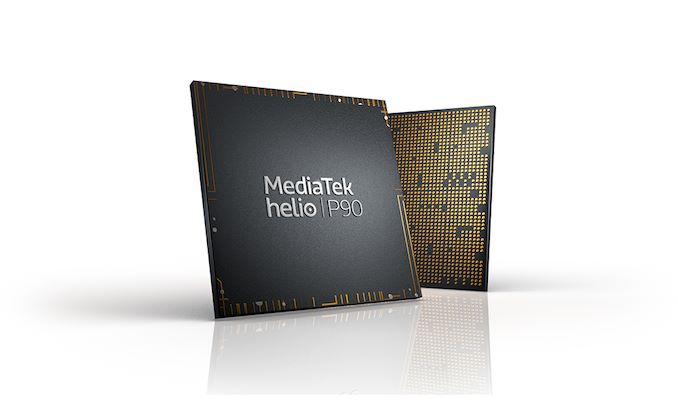
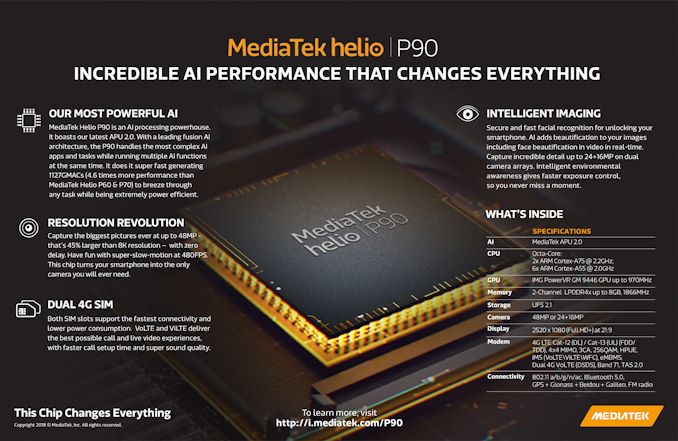

















Bookmarks